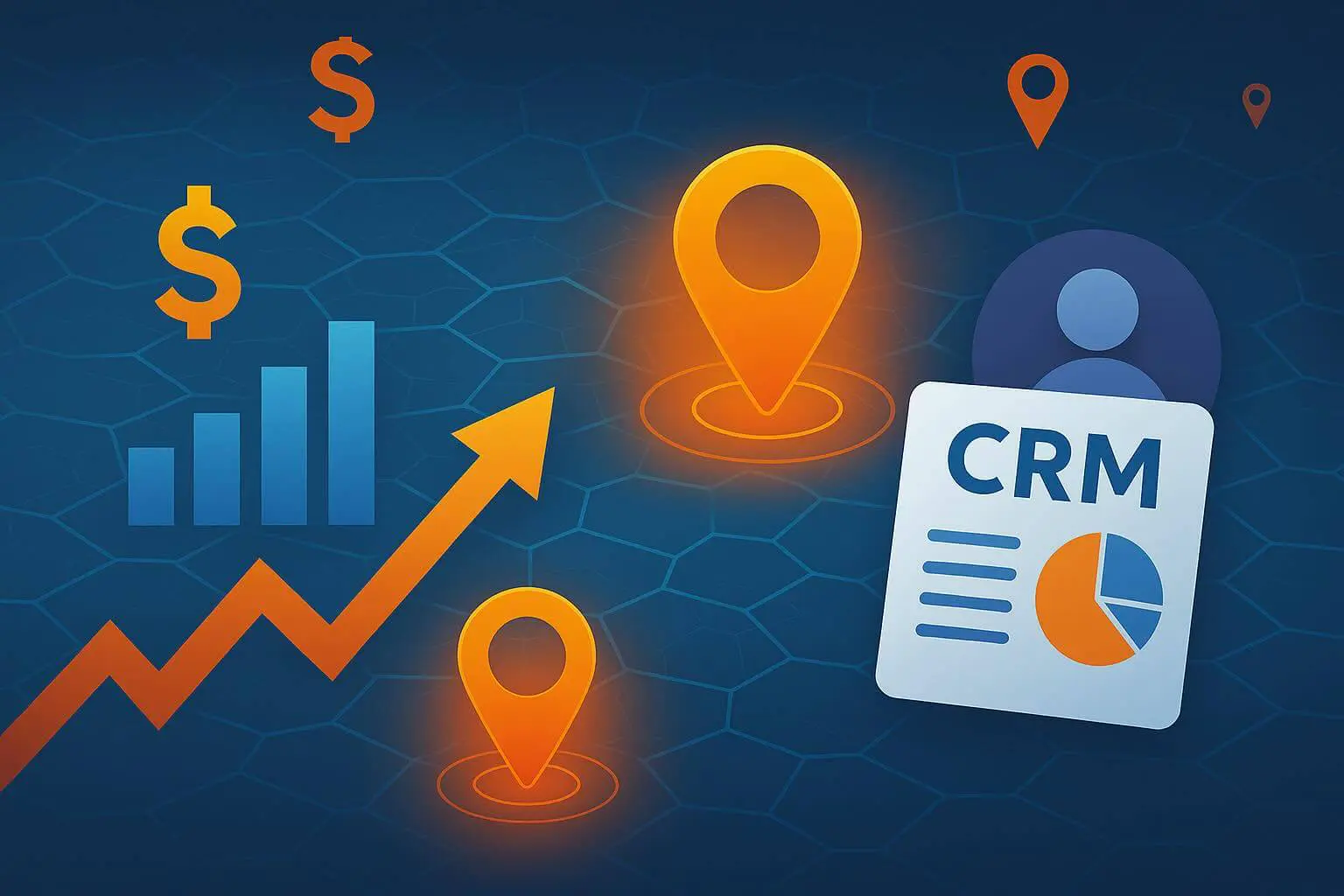
How Content Marketing Drives Sales For Your Business
The days of flashy advertising easily swaying consumers are long gone.
Today’s customers are savvy enough to spot an advertisement from a mile away and are generally uninterested in any sort of sales talk. That’s why it’s so important for businesses to invest in content that can generate value for customers even before they decide to buy.
Now more than ever, content creation and distribution are crucial components of many organizations’ marketing plans. However, many entrepreneurs, company leaders, and marketers may be unsure whether content marketing will increase revenue.
If you’re wondering how content marketing drives sales and how it can benefit your business, keep reading!
What Is Content Marketing?
Here are the fundamentals of content marketing for those just getting started:
- It’s a way of delivering stories that promote interaction between brands and their customers.
- Content marketing brings in new customers and keeps old ones interested.
Content marketing includes blogs, emails, social media posts, white papers, newsletters, videos, and other similar materials. When done well, content establishes credibility, shows that the business cares about its customers, and demonstrates competence in the field.
Customers are more likely to purchase from your business if they view it as a helpful resource and a committed partner in their success.
Why (and How) Does Content Marketing Drive Sales?
Content marketing has made huge strides in establishing a company’s reputation; businesses of all sizes are now investing in this strategy to reach their goals.
Here are some of the reasons why content marketing drives sales.
Draws in Website Visitors
People today do not sit around waiting for advertisements from firms; rather, they go out and choose the company that will best meet their requirements.
People typically use Google or another search engine as their first step. While some users seek out particular brands or items, the vast majority are interested in learning more about general information.
That’s why it’s important to tailor your content to your target audience and incorporate the keywords they’ll be typing into search engines. As a result, not only will the number of visitors increase, but it will be more high-quality traffic composed of potential buyers.
Addresses Customers’ Questions
With 80% of corporate decision-makers preferring articles over commercials to learn about a company and 60% of those same people claiming that reading about a brand through articles helps them make more informed decisions, you know your readers are looking for solutions.
Although your site’s primary purpose may be to generate leads, engaging with visitors by addressing their questions online is a great way to establish rapport with them even before they talk with a sales representative.
Boosts Brand Awareness and Authority
By distributing content across many platforms, marketers can broaden the reach of their efforts and, ultimately, their brand’s appeal. As a result, more people will become familiar with the brand.
Publishing high-quality content does wonders for thought leadership and organic traffic. Building your brand’s image and online presence through relevant content on your platform contributes to greater sales.
The Buyer’s Journey Explained
The buyer’s journey is a model for analyzing the steps a customer takes when deciding to buy a product.
Using this framework, customers are the hero of a story. They are like explorers venturing into the unknown in quest of a solution: they get caught in the vastness of the internet.
This is why consumers view content as tools that will hasten their progress towards finishing the journey. The buyer’s journey consists of these three stages:
- Awareness: This stage occurs when customers realize they have a need or issue. They will first do a general online search to learn more about what you offer.
- Consideration: Consumers in the consideration phase are trying to figure out if your solution is the best option by weighing the pros and cons. They need basic details about the purchasing process and its benefits.
- Decision: At this stage, qualified leads make a final decision to purchase your product. Potential customers understand the nature of the issue they’re trying to address and the range of options available.
Unique content is needed for each stage of the sales funnel so that customers can progress. By understanding the specific stage of the buyer’s journey, you can better tailor your content to meet their needs.
How to Use Content Marketing To Drive Sales
Now that you know how content marketing helps drive sales, here are a few ways to do it:
Make Sure Your Landing Page Is Perfect
Put yourself in the position of a buyer who needs a specific product. If you conduct a web search and are directed to a page that appears cluttered, has uninteresting headlines, and inaccurate or irrelevant information, you are likely to quickly abandon the page in favor of another.
That’s why you need to consider the following when creating one:
- A headline that packs a punch
- Simple to use
- Inviting to the eyes
- Powerful bullet format
- Social proof, such as reviews and testimonials
- Call-to-action (CTA) buttons
Help Ease Customers’ Problems
Converting a site visitor into a paying customer requires thinking about how to relieve their problems and answer their questions. Make sure you provide the details they’re looking for when you write content for your site or publish a post on your product and business.
For instance, if you are in the carpet cleaning business, your content would typically talk about your carpet cleaning process, the benefits of carpet cleaning, and the like. If a visitor is looking for this specific information, they will find it on your blog and appreciate learning more about your business and its offerings.
This will pique the reader’s interest and make them want to learn more.
You should direct your content towards relieving the problems your customers are experiencing to achieve their objectives. Provide the answers your potential buyers are looking for, and watch as your content marketing strategy generates more business.
Optimize for Organic Search
The goal of any content marketer should be to generate high-quality content and boost their search engine optimization (SEO) ranking.
Even though there are several different techniques to rank well in Google search results, the content with the highest quality will always emerge victorious. If your website has good content, Google will put it on the first page.
Making valuable content that ranks well and uses relevant keywords can boost organic website traffic and drive sales. The more interesting and useful your content is, the more people you will be able to draw in.
Some strategies to improve your SEO ranking are:
- Creating and publishing relevant content
- Linking related articles together
- Incorporating highly ranked search terms
- Take advantage of alt tags
- Maintain consistent content updates on your site
Content marketing relies heavily on organic traffic, which could very well result in new leads and, finally, closed deals. In fact, searchers rarely even look at the sponsored ads that pop up alongside the organic results.
That’s why you need to concentrate on creating and distributing unique and organic content.
Share User-Generated Content (UGC)
By showcasing user-created content, you can attract more potential customers to your sales funnel. This is because most people usually experience the fear of being in the dark.
Review articles, social media updates mentioning your brand, and user-created how-to videos can give the impression that everyone is enjoying your offerings, making potential customers more likely to purchase.
Engage with your target market and inspire them to promote your items through social media and online blogging. Having content like this can help establish your credibility and offer you an edge in the industry.
It’s important to go beyond your ideal customer while product testing and reach out to a wider range of people. There are many ways to spread the word about the products or services we rely on daily; nevertheless, the number of applications for these things is practically limitless.
Today, companies are capitalizing on this reality by highlighting their consumers and the positive impact their products have on their daily lives via social media.
Offer Tutorials
There is a good reason why tutorials have become so popular on the internet. 81% of internet users search for information or watch videos about a product before making a purchase, making search results pages and videos ideal for providing your target audience with all the details they need about your new offerings.
People enjoy learning through written and video-based tutorials, so it’s important to create ones that are both educational and accessible to the widest possible audience.
If you include a tutorial, your price can be more easily defended. Since your target market can easily research your competitors’ offerings, including pricing and specials, you should explain why your prices are higher.
If your pricing is greater than the competition’s, you should justify the extra cost by highlighting the value you add in other areas, such as customer care, support, a refund policy, and delivery speed and convenience.
Compile Testimonials From Satisfied Clients
One more good illustration of content marketing that you can implement on your blog is to feature customer reviews or demonstrations of your product in action. By incorporating testimonials from satisfied customers, you establish credibility and demonstrate your role in cultivating brand loyalty.
Prospective customers can be persuaded to join your ranks of devoted followers when they see evidence of trustworthiness in the form of testimonials from existing ones. Put simply, testimonials attest to the credibility of your company. However, be careful not to abuse this marketing tool by bombarding people with messages.
Put CTAs in the Right Places
Include a CTA in content directly related to your product or service to encourage people to check it out. If your website sells indoor plants, and you publish a blog post explaining how to care for one, you could conclude the article with a CTA encouraging readers to get in touch with you for additional information.
If you post a video to YouTube, you can include calls to action through connection cards in the video’s upper right corner or pop-ups overlaying the video itself.
Avoid Using Content as a Sales Gimmick
Although new customers are what you want to attract with content marketing, you don’t want to come out as pushy or salesy. Be careful to keep this language out of your content by creating dedicated product pages that provide details of the product, its price, and how to buy it.
Include links to these pages in your content; just don’t make it sound like an advertisement.
More Points of Contact With Customers
Getting your blogs read by the right people is a key piece of the puzzle. However, keeping them returning for more interesting content is a different challenge.
Consequently, you should increase the number of ways your ideal clients and prospective buyers can get in touch with you.
Throughout the customer’s journey, multiple touchpoints will connect the company and the customer. These instances profoundly impact both the customer’s experience and impression of the brand.
These touch points can include:
- Social media
- Self-help resources
- Emails
Outlining crucial contact points allows companies to make the most of timely opportunities to improve the customer experience.
The Bottomline
With the right strategy, content marketing can effectively draw in site visitors and, in turn, revenue.
However, although content marketing should be integral to every business’s overall marketing strategy, getting started can be challenging. We hope that the information that we’ve shared in this article will help you on your way to content marketing success.
Want help developing your content marketing plan? Our team is here to help. Get in touch with us today to schedule a consultation and see how content marketing may benefit your company.






